Caterpillars can be found throughout North America, typically from spring through fall. You will see them on trees, grass, leaves, or piles of decaying vegetation and under tree bark. They are most active at night, feeding on leaves away from predators. During the day, they rest in hiding spots or cocoons. Check out these 10 caterpillars found in Ohio, including descriptions and information on where they live. Plus, learn about the dangerous caterpillars in the state!
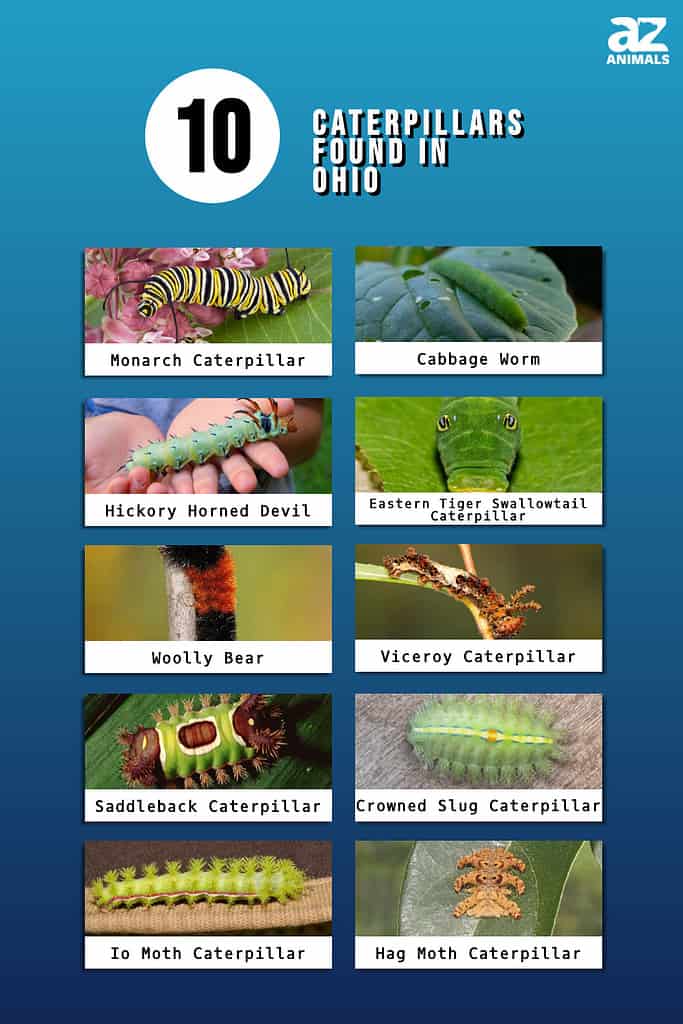
Common Caterpillars Found in Ohio
Monarch Caterpillar

Milkweed flowers are popular food for caterpillars.
©Cathy Keifer/Shutterstock.com
Monarch caterpillars are milkweed butterflies, meaning they mimic the appearance of this toxic plant and only feed on its leaves. By evolving to look like milkweed, they decrease their chances of being eaten by predators. These caterpillars have black and white stripes and can be found anywhere there are milkweed plants, including gardens, fields, roadsides, and open areas. The annual monarch migration runs from late August to October in Ohio.
Cabbage Worm
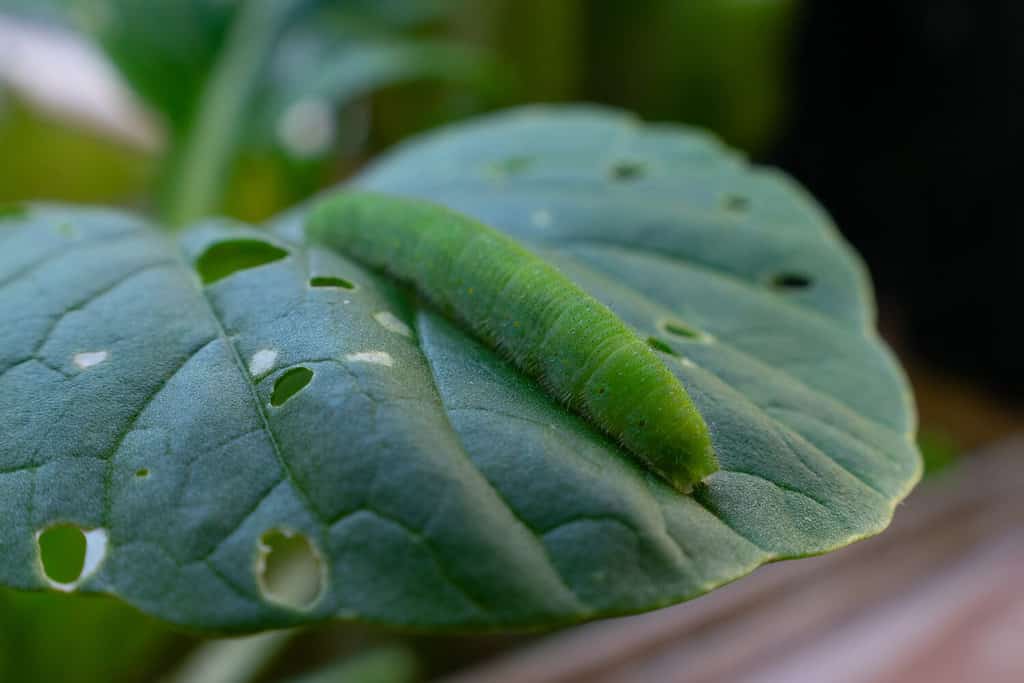
Cabbage worms feed on cabbages and other crops.
©Kelsey Armstrong Creative/Shutterstock.com
There are four kinds of cabbage worms: small white, cabbage looper, cabbage webworm, and diamondback moth. These caterpillars feed on cabbages and other crops, like broccoli, cauliflower, and greens. They are considered pests, and the small white and cabbage loopers are the most common species in Ohio. And they are present in gardens from early spring to late fall.
Hickory Horned Devil
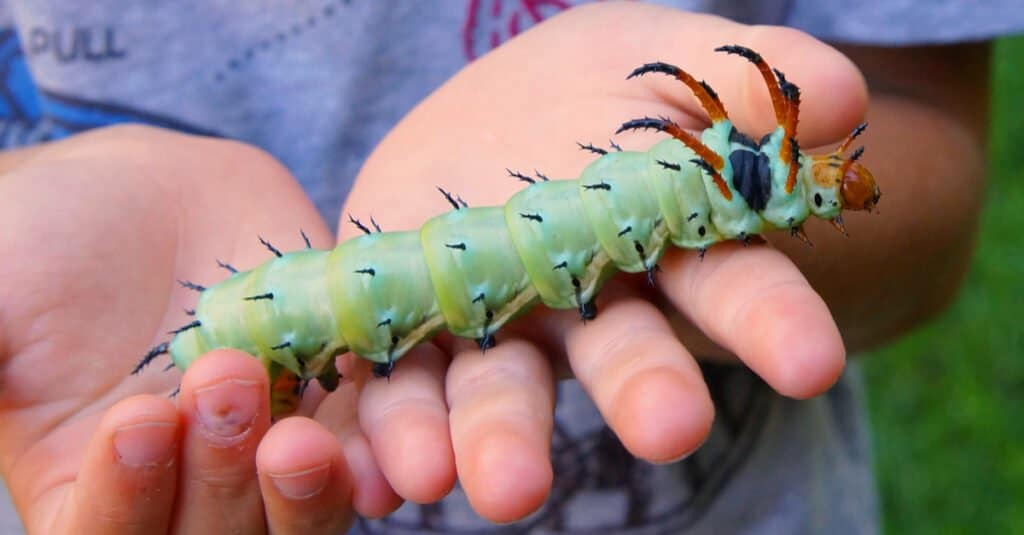
The hickory horned devil uses its horn to protect itself from predators.
©Matt Jeppson/Shutterstock.com
The hickory horned devil is the caterpillar stage of the regal moth. These North American caterpillars are some of the largest species north of Mexico, including their moth stage, which features a wingspan of up to six inches. They are common in the Deep South but have sporadic populations further north. And they inhabit deciduous forests, living on host plants like hickory, ash, and walnut.
Eastern Tiger Swallowtail Caterpillar
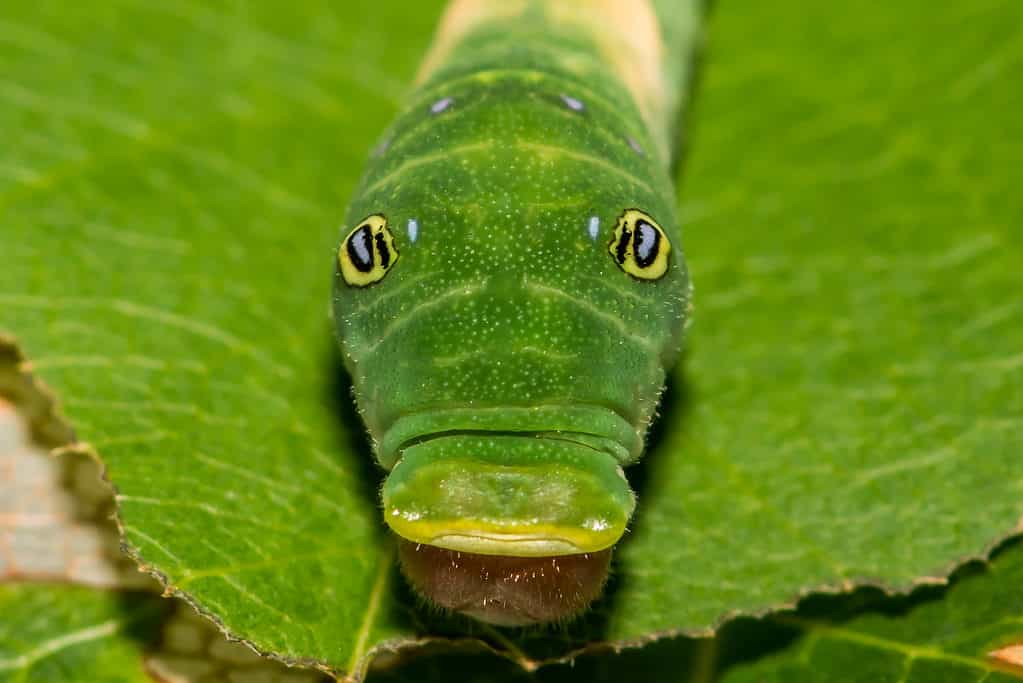
The body of the eastern
tiger
swallowtail caterpillar resembles the head of snake.
©Jay Ondreicka/Shutterstock.com
The caterpillar of the eastern tiger swallowtail is an unusual and amazing animal. Young caterpillars are white and brown and resemble bird droppings. But older caterpillars feature two false eye spots above their true eyes, and when confronted with a predator, they will make themselves appear like a snake. Further, they secrete a foul acidic liquid when attacked. These creatures inhabit deciduous woods near streams, rivers, and swamps.
Woolly Bear
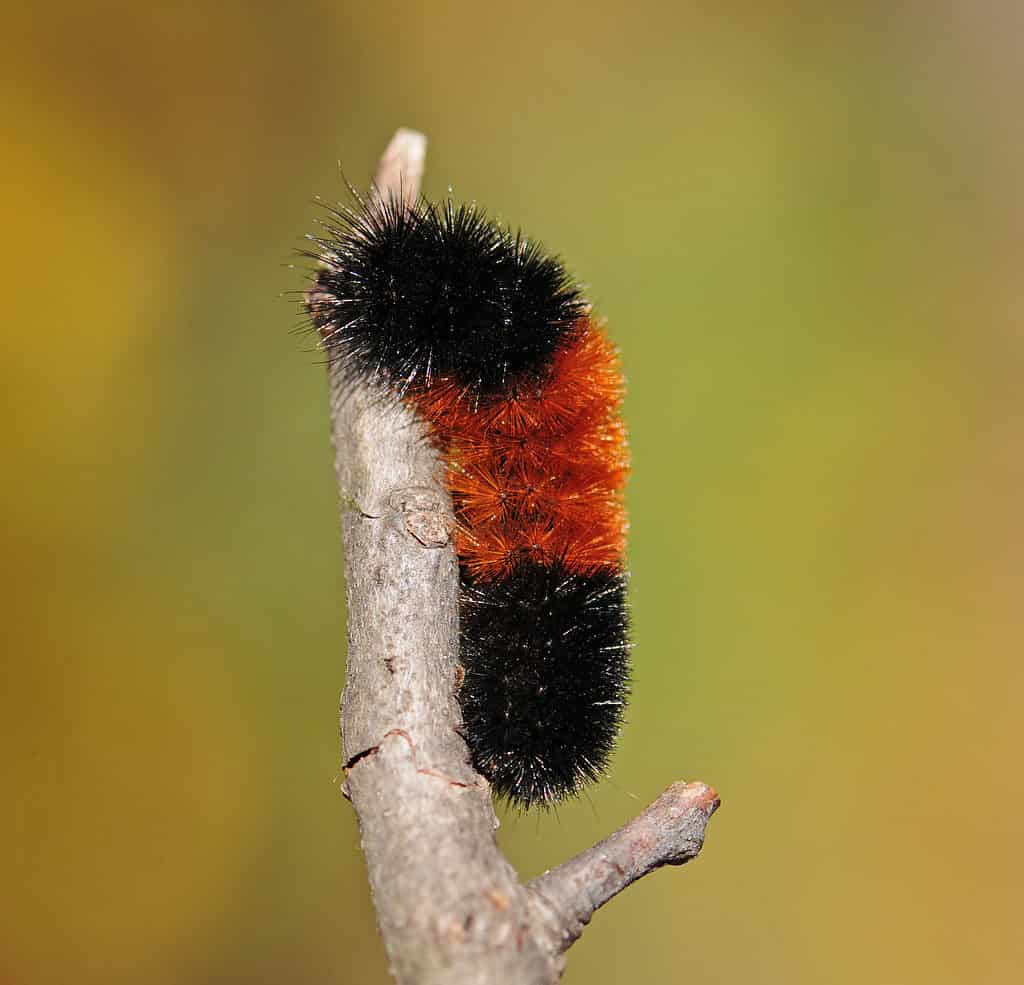
Woolly bears are one of the most common caterpillars in the country.
©Nancy Bauer/Shutterstock.com
The woolly bear is the larval form of the Isabella tiger moth. And they live across the United States and Southern Canada. Woolly bears are one of the most common caterpillars in Ohio, and they are easy to distinguish due to their fuzzy brown and black appearance. While this species is not venomous, its spiny hair can cause dermatitis in some individuals. And they live in many habitats, such as meadows, yards, forests, prairies, and gardens.
Viceroy Caterpillar
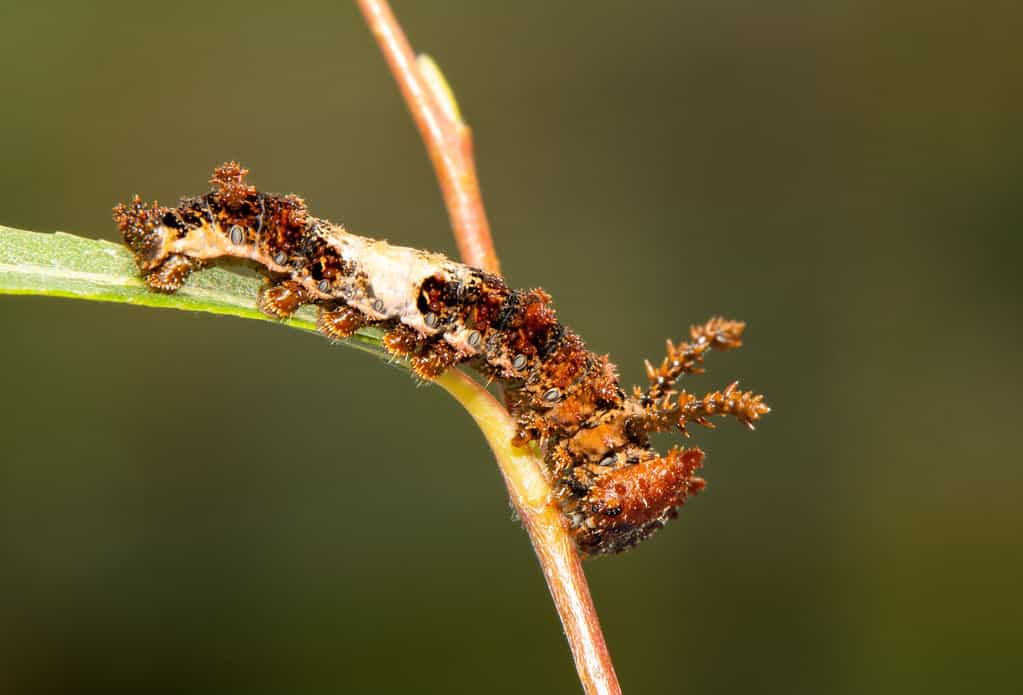
Viceroy caterpillars resemble bird droppings.
©Sari ONeal/Shutterstock.com
The viceroy is a mimic of the monarch butterfly. This species ranges throughout the United States and parts of Canada and Mexico. The caterpillars resemble bird droppings and feature black, white, and brown coloring. They also have salicylic acid in their bodies, making them bitter and unpalatable to predators.
Venomous Caterpillars in Ohio
Saddleback Caterpillar
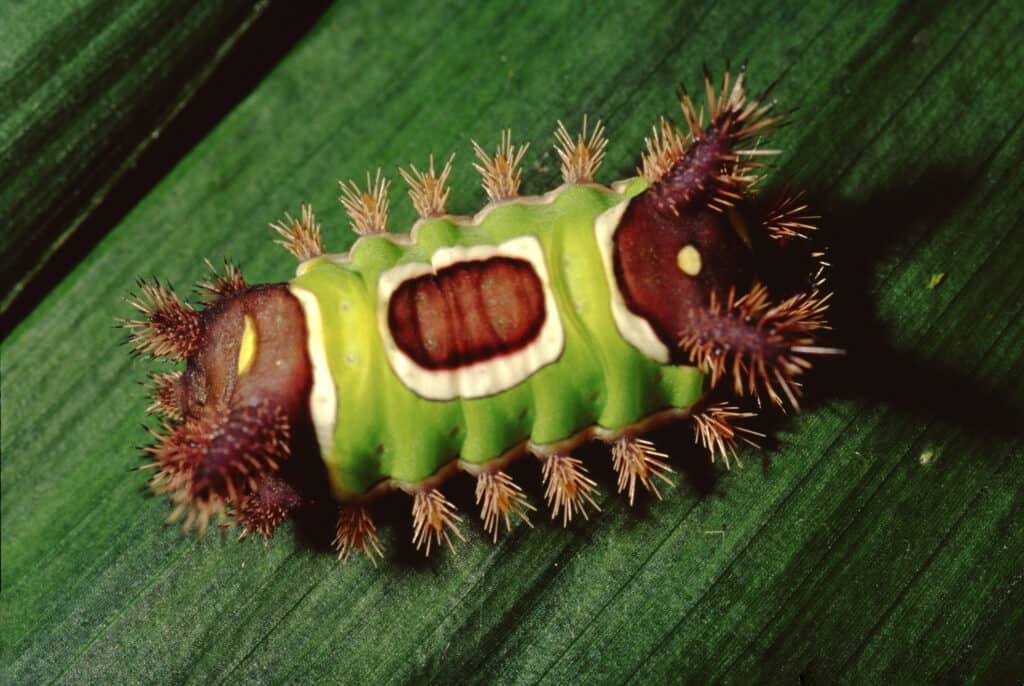
Once moths, they are dark brown. The dot remains, but it is only visible when the moth opens its wings.
©Liz Weber/Shutterstock.com
Native to Eastern North America, the saddleback caterpillar is the larva of a species of slug moth. This caterpillar has unique characteristics, such as a green and brown body with a white-ringed brown spot that looks similar to a saddle. They also feature horns with urticating bristles that secrete venom. Their stings can cause pain, swelling, and nausea. You can find them on many plants like apple, citrus, dogwood, elm, maple, and oak.
Crowned Slug Caterpillar
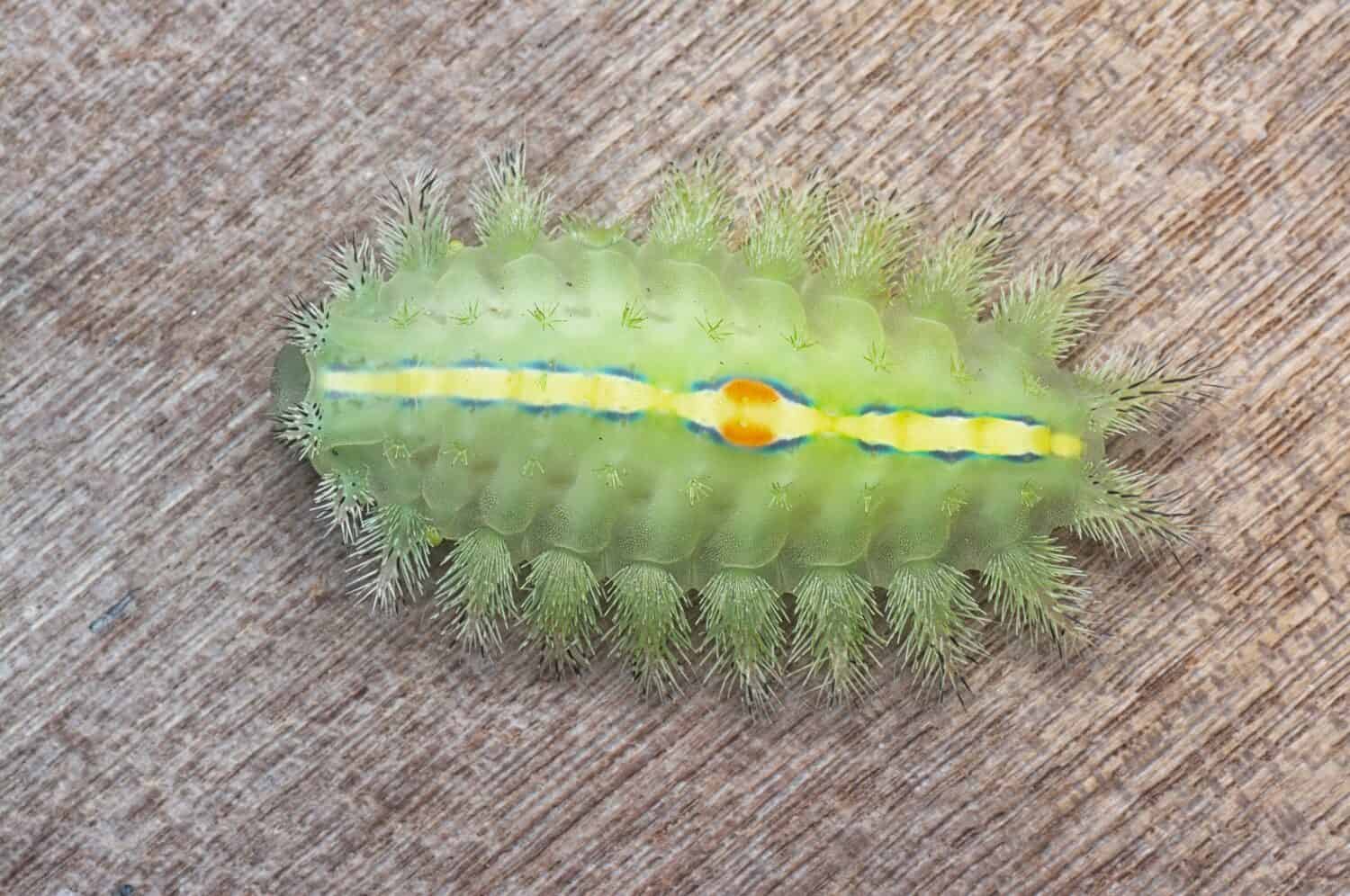
Crowned slug caterpillars feature stinging spines.
©Young Swee Ming/Shutterstock.com
Pale green and flat, the crowned slug caterpillar is a magnificent creature of the animal kingdom. This caterpillar is the larva of a slug moth and features stinging spines covering the edge of its body and back. They live in woodlands on oak, cherry, maple, elm, and beech. Their spines are connected to poison sacs that release when touched. Its poison can cause pain, itching, burning, and swelling.
Io Moth Caterpillar

Io moth caterpillars have a lot of thick bristly, stinging spines that can cause severe irritation.
©Andy Reago & Chrissy McClarren / CC BY 2.0 – License
Also known as the peacock moth, these caterpillars are native to North America, including Canada and the United States. While the mature moth stage features eye-like markings and bright yellow or red coloring, the caterpillars are bright green and covered in many stinging spines. Their stings are not lethal to humans but can be painful and cause irritation to the skin. They also release venom off the slightest touch.
Hag Moth Caterpillar
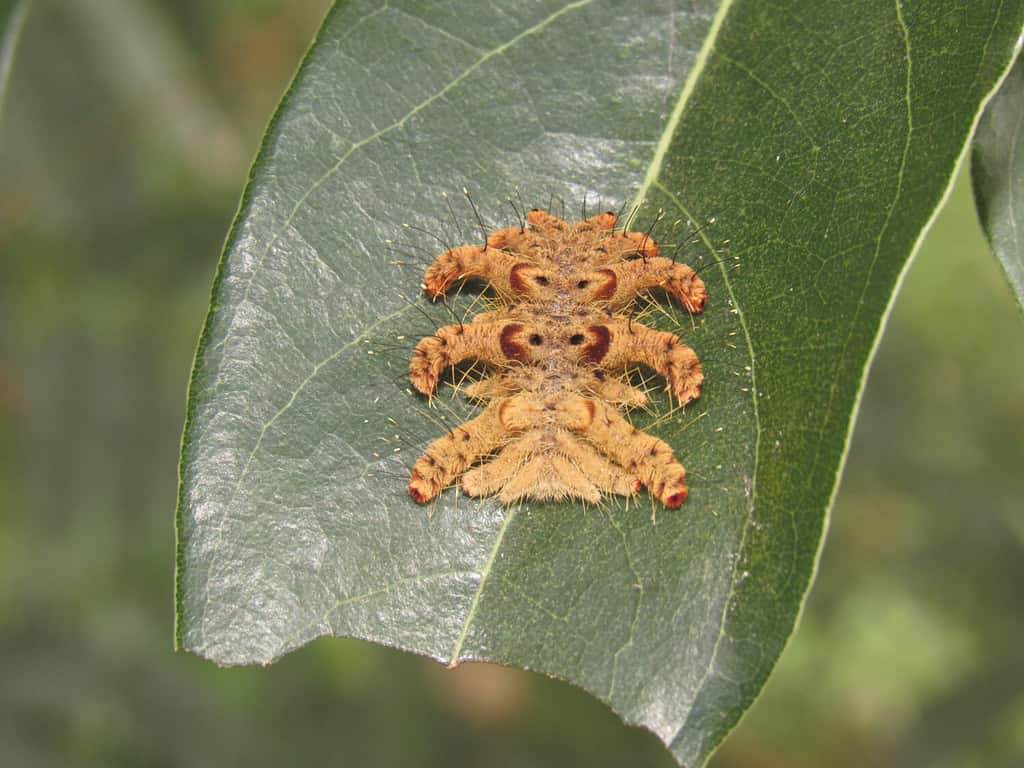
Hag moth caterpillars feature toxic spines.
©Fabio Ara/Shutterstock.com
Also known as the monkey slug, these caterpillars are the larval stage of hag moths. It resembles the shed skin of a hairy spider, featuring nine pairs of curled arm-like projections covered in spines. The hairs are attached to toxin glands that release toxins upon contact. In humans, symptoms include burning, stinging, redness, swelling, and itching.
Caterpillars Found in Ohio: A Recap of the Top 10
| Rank | Caterpillars Found in Ohio | Venomous? |
|---|---|---|
| #1 | Monarch Caterpillar | No |
| #2 | Cabbage Worm | No |
| #3 | Hickory Horned Devil | No |
| #4 | Eastern Tiger Swallowtail Caterpillar | No |
| #5 | Woolly Bear | No |
| #6 | Viceroy Caterpillar | No |
| #7 | Saddleback Caterpillar | Yes |
| #8 | Crowned Slug Caterpillar | Yes |
| #9 | Io Moth Caterpillar | Yes |
| #10 | Hag Moth Caterpillar | Yes |
The photo featured at the top of this post is © Young Swee Ming/Shutterstock.com
Thank you for reading! Have some feedback for us? Contact the AZ Animals editorial team.






